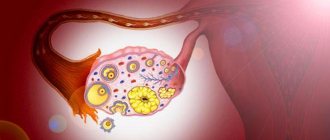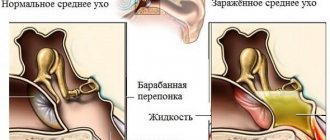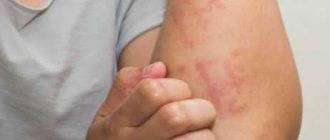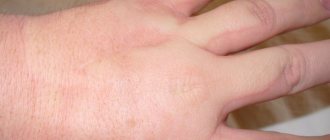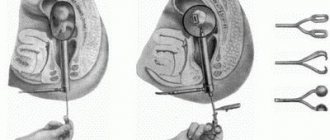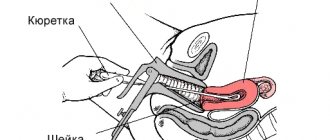A healthy person cannot even imagine that hundreds of people, exhausted by the disease, have the question of how to get rid of nasal polyps without surgery. Only a person who has been tormented by the symptoms of polyposis for years can understand the depth of the problem.
The exact mechanism of the occurrence of benign formations in the nose has not been identified, but the factors that provoke its triggering have been identified:
- prolonged contact with the allergen;
- advanced forms of rhinitis, sinusitis;
- the presence of infections in the body (staphylococcus, fungus);
- mechanical trauma to the nose;
- congenital deviated nasal septum.
Surgery does not always have a long-lasting effect. In many operated patients, the problem returns with alarming speed. For some patients, surgery is contraindicated due to allergies to medications. Therefore, information about the treatment of nasal polyps without surgery is of particular relevance.
Symptoms of the disease
When polyps form, the following symptoms occur:
- breathing problems, a feeling of a stuffy nose, arises from the fact that the formation interferes with the passage of air;
- copious mucous or purulent discharge occurs because the obstruction in the nose collects infection;
- frequent sneezing, the body perceives growths as foreign objects and attempts to push them out of the nose;
- deterioration of smell, may disappear completely;
- pain in the head appears due to the fact that growths inhibit nerve endings and cause insufficient oxygen supply to the brain;
- frequent nosebleeds not associated with irritation of the nasal septum;
- the voice may change, nasality may appear;
- heavy snoring.
When the mucous membrane is inflamed for more than three months, the likelihood of polyps appearing increases. It is quite difficult to determine pathology at the initial stage of development, because most people confuse the signs of growths with a common cold.
Symptoms of papillomas in the nose:
- difficulty breathing - occurs due to a significant increase in mucous membrane,
- complete or partial absence of smell,
- runny nose with pus or mucus, this symptom indicates that a secondary infection has been added to the main ailment,
- Runny nose - the spread of tissue leads to constriction of nerve endings, the brain does not have enough oxygen due to poor breathing,
- sneezing – the enlarged mucous membrane begins to touch the eyelashes and is an irritant, a feeling of a foreign body appears in the nose,
- change in voice due to congestion,
- pain in the area of the nose, upper jaw,
- snore,
- nasal bleeding,
- decreased appetite.
These symptoms are very similar to a cold. But there is still a difference. The cold is cured in 10 days, but the nasal growth is gone. When the above symptoms are observed for a long time, then a visit to a specialist is mandatory. If the disease is left untreated, swelling around the eyes, blurred vision, and high temperature will appear.
Diagnostics
An otolaryngologist may suspect polyps inside the nose by asking the patient about his feelings and condition, since certain signs indicate the presence of a polyp in the nose.
Sometimes a person does not pay attention to deteriorating health, perceiving a long runny nose as a common cold.
Diagnostics: X-ray.
There are a number of signs indicating the appearance of tissue growth in the nose:
- As the polyp grows, it blocks the nasal passage, it becomes impossible to breathe normally, and the patient is forced to open his mouth. The situation is aggravated by the fact that the mouth is not able to clean the air from various allergens and bacteria that can penetrate the lungs.
- There is a loss of smell perception, which can also be a symptom of the appearance of a polyp. As a result of neoplasms on the nasal mucosa, the receptors stop working and perceive different odors. It is sometimes very difficult to restore the previous functioning of nasal receptors even after treatment.
- Frequent sneezing. Any foreign object that gets into the respiratory tract of the nose causes a person to sneeze. The growing polyp begins to irritate the cilia that line the mucous surface of the nasal cavity. They, in turn, perform their function by trying to expel unwanted body from the nose, causing sneezing.
- Once a runny nose begins, it does not stop. This condition can be distinguished from a regular cold by nasal discharge - with polyps, traces of pus or blood may be mixed with clear mucus. The appearance of blood may indicate that a bleeding polyp of the nasal septum has formed, or an infectious disease has occurred, which requires more serious treatment.
- With a large polyp, compression of the nerve fibers occurs, which affects poor health and frequent headaches. With large polyps, oxygen starvation of the body cells may occur.
- Painful sensations in the eye area, which arise due to polypous formation in the maxillary sinus. The pain will be more intense when you press on the skin around the nose. When the disease becomes severe, movement of the eyelids and eyes will be significantly difficult.
- A large polyp gives the sensation of the presence of something in the nose. Formations of this size can, to varying degrees, block the passage of the auditory organ, which is connected to the nasopharynx, as a result of which hearing loss can develop.
- Especially often, the polyp manifests itself as snoring during sleep, since the nasal passage is blocked by the overgrown epithelium.
- Appetite is lost, which is a consequence of prolonged oxygen deficiency experienced by the entire body, and pathogenic organisms that have penetrated the gastrointestinal tract.
Classification of nasal polyps
There are several main types of polyps formed in the nasal sinuses. These include:
- Choanal. Conventionally divided into 3 subgroups: ethmoidochoanal, sphenochoanal, antrochoanal. Most often they are formed from cells of the nasal concha, septum, frontal sinus and ethmoid labyrinth.
- Fibrous. The basis of this type of polyp is fibrous tissue. It is often associated with blood vessels, so it grows quickly. The growth is benign and rarely transforms into a malignant form.
- Allergic. It occurs against the background of increased allergization and grows in the nasal passages. Occurs in childhood.
- Angiomatous. Formed in the nasal cavities due to the proliferation of fibrous tissue. A vessel can pass through the growth, so the polyp begins to bleed.
Polyps are also classified depending on the location of formation (sphenoid, maxillary sinuses).
Diagnosis of nodules in the nose in adults
Diagnosis of nasal polyps is made by an otolaryngologist. During the visit, he performs an anterior rhinoscopy using Hartman speculum. This way, you can get a more complete view of the nasal cavity from the front. Thanks to this examination, the doctor can see smooth-walled, shiny and pedicular formations or a nodular stalk, which may be white, yellow or transparent. Some of them are covered with purulent discharge.
These structures are usually localized in:
- posterior nostrils;
- in the sinuses of the estuary,
- middle section of the nasal passage.
In order to distinguish between types of polyps, the following diseases and conditions should be taken into account:
- pituitary adenoma,
- malignancy of tumors,
- bleeding nasal septum polyps,
- meningo-cerebral hernia.
A fiberoptic bronchoscopy (endoscopy) technique may be performed, which involves inserts into the nose (under local anesthesia) and a flexible endoscope with a small webcam that allows viewing of the enlarged nasopharynx. A useful test is computed tomography.
Herbal remedy Loromax
You can cure nasal polyps without surgery using Loromax:
- Drops based on plant extracts.
- They inhibit bacteria, the inflammatory process, improve the condition of the nasal mucosa, and promote the resorption of polyps. Full recovery is possible.
- They fight the full range of symptoms that appear in the presence of polyps.
- Drops affect the root cause of the disease, and not the consequences.
- They are not addictive, do not destroy the vessels of the mucous membrane and the entire body as a whole.
- They have no contraindications or side effects.
- They may not be suitable only if you are allergic to some component of the drops.
- Suitable for the treatment of chronic runny nose and in acute illness.
It is necessary to drip 1 - 2 drops into each nostril 3 to 4 times every 1 day.
Health Advice
It may be possible to cure a polyp in the nose with a folk remedy, but official medicine rejects this fact due to its unproven effectiveness against formations. However, the choice of treatment method for the pathology lies with the patient, so doctors advise doing everything correctly:
- Carry out a full diagnosis with an otolaryngologist. It happens that a self-made diagnosis turns out to be false, and a person is treated for the wrong thing.
- An adult should not subject children to experiments. A fragile child may react unpredictably to such remedies for nasal polyps. The condition worsens.
- You should consult your doctor about your intended therapy. Based on the patient’s medical history, he can tell what is contraindicated and what is acceptable.
- Monitor the body's response to polyp therapy. Burning, pain, swelling may be a sign of individual intolerance, and in some cases an acute allergic reaction.
- Do not combine folk remedies for formations in the nose with medications without the knowledge of a doctor; it happens that the components react negatively to each other. The result may be unpredictable.
- Study the composition of the products, the presence of toxic components, contraindications.
- Allergy sufferers should visit an appropriate specialist to prevent exacerbations of the pathology.
- Follow the dosage! Herbs, like pills, contain chemical compounds that can be dangerous if they accumulate in the body and overdose.
- Do not use aggressive substances for topical use in the nose in case of pathology. A burn to the mucous membrane is a provocateur for the spread of polyps to other areas.
- Follow a diet. Nutrition plays a big role in both the formation and treatment of formations.
- To refuse from bad habits. Alcohol promotes cell mutation and changes many processes in the body. Smoking has a similar effect, which, moreover, in the form of smoke, constantly reaches the mucous membranes of the nose and throat, leading to pathologies.
- Do not refuse surgery for polyps at an advanced stage, otherwise you may lose your hearing, sense of smell, ability to breathe through your nose and other consequences.
Basics of proper nutrition for polyps
Many will be surprised - what does food have to do with it? Think about how we replenish the supply of essential substances that allow the body to function as it should. It is diet that largely determines human health. If there are fruits and vegetables, dietary meat and fish, cereals, and dairy products on the table, then the body gets everything it needs. Immune defense functions perfectly, hormones are in order. In such a situation, the risk of developing a pathology - a chronic runny nose or allergies - is close to zero. Therefore, there is no reason to increase the area of the inner lining of the nose by growing formations.
Nutrition is a double-edged sword. We can improve our condition by following the principles of healthy food consumption, but there are factors that provoke various malfunctions, including polyps, in the human body. You should refuse:
- Sweet-flavored sodas and packaged juices;
- Coffee, strong brewed tea;
- Fried, fatty foods;
- Empty products that do not provide any benefit. For example, chips, French fries, sausage;
- Reduce the amount of sugar and sweets;
- “Chemical bombs”, everything that has a huge composition mainly of artificial additives;
- Large volume of portions.
Important! One of the foundations of a healthy diet is getting enough clean water into your body. This is about 1.5-2 liters for an adult.
Causes of polyps
The growth of nasal polyps occurs for a number of reasons. The main ones are:
- reduction of the body's defense reactions;
- genetic predisposition;
- curvature of the nasal septum due to mechanical trauma;
- allergic reactions provoked by dust, food, pollen;
- respiratory diseases not treated in time (sinusitis, sinusitis);
- genetic pathologies (Churg-Strauss syndrome, cystic fibrosis).
Diseases such as cystic fibrosis, asthma, and Young's syndrome can accelerate the growth of benign tumors.
The formation of growths occurs in several stages:
- Allergens have a long-term effect on the nasal mucosa, weakening local immunity. Healthy tissue is quickly damaged.
- The exudative phase occurs due to increased production of mucus by glandular tissue.
- If you do not consult a doctor in a timely manner, the connective tissue quickly grows, replacing the glandular tissue.
Polyposis, regardless of stage, has common symptoms (lethargy, headache, nasal congestion or runny nose).
Causes of nasal polyps
- microorganisms immune polypom;
- frequent colds and infectious diseases accompanied by a runny nose;
- chronic sinusitis (inflammation of the paranasal sinuses - sinusitis, frontal sinusitis, ethmoiditis);
- allergic rhinitis caused by inhalation of house and library dust, plant pollen, fungal spores, animal hair, particles of household chemicals, chromium compounds;
- severe curvature of the nasal septum, causing breathing problems and proliferation of the mucous membrane;
- hereditary tendency to form polyps;
- pathological reaction of the immune system.
- Antrochoanal - most often arise from the mucous membrane of the maxillary sinus. Located on one side. More common in children.
- Ethmoidal - develop from the mucous membrane lining the ethmoidal labyrinth. They occur on both sides of the nasal septum. It affects people in adulthood.
- First stage - polyps cover only a small part of the nasal space
- The second stage - the connective tissue grows so much that it blocks a significant part of the lumen of the nasal cavity.
- The third stage - polyps completely block the respiratory tract.
Treatment with Todikamp
Treatment of polyps without surgery is possible with the drug Todicamp:
- The natural preparation is prepared from green walnuts, from which a distillate is obtained by boiling at a very high temperature.
- The drops are completely non-toxic.
- Immunomodulatory, rejuvenating.
- Has no contraindications.
- It has a powerful restorative effect, quickly penetrates into cells, strengthens, restores membranes, the cell itself, and improves metabolic processes.
- Cobalt salt and juglone prevent the proliferation of tumor tissues. Destroy diseased cells and promote the regeneration of healthy cells. It is used to combat tumors and their metastases, regardless of whether they are malignant or benign.
- Todikamp eliminates swelling and inflammatory processes.
We invite you to familiarize yourself with Red stretch marks on the abdomen in men
Use of the drug for the treatment of nasal polyps:
- The drops must be mixed with pumpkin or hemp oil in a ratio of 3 parts oil to 1 part drug. You should not make a lot of solution at once. The oil will quickly lose its quality. It is necessary to prepare the mixture for no more than 1 day.
- Take the mixture orally no later than ½ hour before meals and 1 hour after meals.
- The drug is taken to start with 9 drops.
- Then gradually increase to 1 k. per 2 kg of weight. Take drops 3 times every day.
- Lubricate the area of the maxillary and frontal sinuses with the drug in the morning and evening.
- Drop 1k mixture into each nasal passage. of the drug and 1 tbsp of hemp or pumpkin oil.
- If the drug causes headache, nausea, weakness, loss of appetite, you need to take a break for a couple of days. Then take 5 drops at a time less than before the break. After a few days, return to the calculated dose of 1k per 2 kg. weight. Also stop lubrication and nose drops for 2 days. Then renew in the same quantity.
Saline treatment
Saline solutions are used to treat nasal polyps without surgery.
To prepare such a solution you need:
- Bring 1 liter to a boil. water.
- Cool to room temperature.
- Dissolve 1 tsp in water. sea salt, taken on top.
- Sea salt can be replaced with the same amount of regular table salt, ¼ tsp. soda and 2 drops of iodine.
- Thoroughly dissolve everything in water, then filter the water through several layers of gauze.
- It is most convenient to administer it into the nose using a special enema for rinsing the nose. It can be bought at a pharmacy.
- Introduce the solution into the nose without any effort, slowly and carefully.
- You can do without an enema by simply sniffing the solution through your nose. But this is inconvenient, especially if the polyps have grown multiple times.
https://www.youtube.com/watch?v=https:i7E3Lhcwh10
The saline solution has the property:
- pull out the inflammatory process from the body;
- remove swelling;
- dissolve polyps.
Methods for eliminating the disease
Before getting rid of nasal polyps, you need to visit an otolaryngologist. With the help of examination and special tests, the doctor will be able to identify the true cause of the appearance of tumors. Drug therapy is aimed at eliminating not only polyps, but also the factors that provoked their appearance. Let us consider in more detail how the disease can be cured using conservative methods.
Medical polypotomy. This is the name of the method of eliminating tumors, in which hormonal drugs are injected directly into the polyps. A high concentration of hormonal substances suppresses further growth of the mucous membrane and destroys the neoplasm, after which its remains are rejected and removed from the nose. The method has its drawbacks; it can cause side effects: a malfunction of the immune system, the appearance of ulcers on the mucous membranes, weight gain and the appearance of concomitant diseases. But this technique also has its advantages: the drugs act locally, they are not absorbed into the bloodstream; Just 2 injections with a break of several weeks are enough to eliminate the polyp; neoplasms disappear completely 1-1.5 months after the start of therapy.
For each patient, the drug to eliminate the tumor is selected individually. The choice of doctor depends on the initial condition of the patient, the presence of concomitant diseases and a number of other factors. Injections are given in a clinic by a specialist; self-treatment is prohibited.
Topical steroids. These products should not be used for a long time, as they can cause negative reactions. However, they are ideal as an “ambulance” to eliminate swelling and inflammation. These drugs cause tumors to decrease in size.
The most common drugs in this group are: Beclomethasone; "Metazon"; Fluticasone. Cromoglycates. The drugs stabilize the functioning of mast cell membranes. Their action is based on temporarily stopping the production of histamine, which causes swelling of the mucous membrane and polyp growth.
These remedies cannot be used for a long time, as they can negatively affect the functioning of internal organs. The most popular in the group are “Ketotifen” and “Sodium cromoglycate”. Antibiotics. A course of treatment with these drugs is prescribed if the growth of nasal polyps is caused by chronic inflammation of a bacterial nature.
The drugs can cause negative reactions, and with prolonged use, immunity is developed, which makes each new course of treatment less successful. Medicines are prescribed to patients individually.
Antihistamines. They help get rid of polyps caused by allergies. They are prescribed only after allergy testing and identification of agents to which the body reacts negatively. In addition to drug therapy, care must be taken to ensure that the patient does not come into contact with substances that cause swelling of the nasal mucosa.
Patients are often found to be intolerant to acetylsalicylic acid; in this case, treatment with non-steroidal drugs that include aspirin is contraindicated. Also, all foods containing salicylates (spinach, blackberries, apricots, etc.) should be removed from the patient’s diet.
Immunotherapy. This treatment method is aimed at strengthening the immune system. Immunocorrective agents are of bacterial origin; they contain ribomunil and bacterial agents that increase the production of antibodies in the body. Vaccination is carried out intramuscularly; it avoids antibiotic therapy. Hormonal aerosols. Effective only as a prevention of relapses or during the recovery period after surgery.
The products contain a small amount of hormones and act only on the surface of the mucous membrane, without being absorbed into the bloodstream. They cause almost no side effects and are suitable for home use.
https://www.youtube.com/watch?v=K84x0erBgZs
Homeopathy. Drugs in this group are used for prevention or treatment if the patient has contraindications to other drugs. If a pointed polyp is detected, Thuja 30 is prescribed; if it is a fleshy neoplasm, the following drugs are taken in turn: Phosphorus 6, Bronchicum, Silicea 6.
To wash the mucous membrane, use a solution of Teucrium glycerin with boiled water, the components are taken in a ratio of 1:5. You can also use dry powder for inhalation or lubricate the neoplasm with concentrated liquid. A mucous polyp can be eliminated with the help of Calcarea carbonica; 2 drops are dripped into the nose for 6 days in a row.
Main contraindications
Contraindications to drug treatment may include:
- Serious diseases of internal organs and systems;
- Acute inflammatory diseases;
- Allergic reactions.
Other conditions include:
- Bleeding due to polyposis;
- Chronic rhinitis with complications;
- Early childhood;
- Regular nocturnal apnea;
- Speech difficulty in children over 2-3 years of age;
- Changes in the structure and shape of the jaw bones.
In these cases, the only treatment option is surgery.
One-time polyp removal allows you to:
- Instantly ease nasal breathing;
- Restore oxygen supply to the brain;
- Prevent further maxillofacial deformities in children.
The method of surgical intervention is chosen by the doctor based on various diagnostic criteria.
Treatment of nasal polyposis with conservative methods is recommended only under the supervision of a physician. This is important, since all medications significantly affect the condition of internal organs. Only the attending physician is able to adequately assess the degree of threat from an existing polyp, the degree of harm from the choice of one or another treatment method.
How to treat nasal polyps in a child at home, read our article.
You can make an appointment with a doctor directly on our website.
Be healthy and happy!
Endoscopic removal of nasal polyps or any other surgical intervention is prescribed to the patient, provided that drug therapy has not brought relief. Indications for the operation:
- partial or complete loss of taste and smell;
- chronic respiratory pathologies (including exacerbation of sinusitis);
- frequent asthma attacks;
- nosebleeds;
- purulent discharge with an unpleasant odor;
- nasal congestion;
- snore.
Removal of growths using the endoscopic method is prescribed for people with an anatomically deviated nasal septum.
What does official medicine offer against formations?
The otolaryngologist will determine the severity of the pathology and the type of polyp. Based on these data, a decision on treatment tactics will be made. Either these are medications and observation, or surgery is the only way to guarantee getting rid of the formations. Modern surgical capabilities make it possible to quickly and effectively eliminate pathology. Using laser, shaver, endoloop and other methods. However, such procedures are contraindicated for polyps in people with heart disease, decreased blood clotting, chronic general ailments, and oncology. There is a temporary limitation for pregnant women, women during menstruation, with severe allergic pathologies in acute form, and during infection.
Therefore, it is quite advisable to try proven traditional medicine recipes for those for whom removal of formations from the nose is contraindicated.
Preparing for surgery
Before agreeing to the operation, you must read the price list in advance and study reviews about the clinic. The cost of admission and prices for procedures vary depending on the professionalism of the surgeon and accompanying manipulations (plasty, drainage).
Surgery is performed after examining the patient and identifying possible contraindications.
First of all, a person should visit an otolaryngologist. The specialist questions the patient in detail and collects anamnesis. The patient must inform the otolaryngologist about a number of diseases, which include pathologies:
- heart and blood vessels;
- organs of the upper and lower respiratory tract.
Diseases of autoimmune etiology (HIV), liver (hepatitis, cirrhosis), and a tendency to allergic reactions cannot be kept silent. To exclude undesirable consequences, the doctor is informed about the medications that the patient took before contacting the otolaryngologist.
We suggest you familiarize yourself with Small round spots on the skin
After collecting anamnesis, the doctor conducts an examination using a nasoscope - a special device equipped with a microlamp. An otolaryngologist determines the symptoms and nature of nasal discharge. If the polyp is located deep, nasal endoscopy is prescribed. Magnetic resonance and computed tomography will help determine the location and size of the growth.
Necessary tests
Before surgery, the patient must undergo a series of tests. These include:
- delivery of bacteriological material (including nasal mucus);
- urine test (general) to confirm the absence of chronic kidney disease;
- blood test for immunodeficiencies and viral hepatitis;
- test for syphilis (serological reaction);
- donating blood to determine the prothrombin index, fibrinogen, INR and APTT;
- blood for clotting and duration of bleeding;
- biochemical analysis of blood from a vein (determination of creatinine, protein and glucose);
- blood for determination of leukocytes.
Tests are taken 7 days before the intended intervention.
Contraindications
Surgical removal of polyps is not recommended for breastfeeding or pregnant women. Absolute contraindications for the procedure:
- poor blood clotting;
- exacerbation of chronic pathologies of the heart, kidneys and liver;
- frequent allergic attacks.
For people prone to allergic reactions, operations to remove growths are not performed during the flowering period of plants.
Before surgery, the patient may be prescribed medication. If the patient suffers from respiratory diseases of infectious etiology, he is prescribed antibiotics from the group of cephalosporins, macrolides or fluoroquinolones. They are taken for 3-5 days.
A few days before surgery, the nasal cavity begins to be treated with Dexamethasone (solution), which helps relieve swelling and local inflammation. To prevent allergic reactions, the patient must take antihistamines (Tavegil, Diazolin, Ketotifen).
2-3 days before surgery, the patient should start taking acetylsalicylic acid or its derivatives. Drugs in this category help minimize the risk of bleeding. On the day of surgery, the patient is given an enema. The intervention is carried out under anesthesia.
Rehabilitation after polypotomy
The postoperative period depends on the extent of surgical intervention performed on the patient. If a polysinusotomy was performed, the patient's nasal cavity is tamponed to avoid postoperative nosebleeds. In the case of endoscopic shaver or laser polypotomy without opening the sinuses, you can do without tampons.
Rehabilitation generally takes up to one week for any type of intervention.
With minimally invasive interventions, this period is reduced to 2-3 days, until the reactive postoperative swelling of the mucous membrane subsides. In any case, after surgery it is recommended to limit physical activity for 2-3 weeks.
After surgery, it is mandatory to prescribe topical steroids to prevent the regrowth of polypous tissue.
It is important to know that patients with a disease such as polypous rhinosinusitis must undergo a course of topical steroids several times a year.
Treatment with folk remedies
How to prepare nasal drops:
- Using a series. Art. l. chopped string is steamed with a glass of boiling water. Boil for 10 minutes. over low heat. Strain. Drip 3 drops into each nostril in the morning and evening at the same time for 20 days.
- Anise drops. Grind 15-20 g of pharmaceutical anise in a coffee grinder. Pour 100 ml of 70% medical alcohol into a bottle. Leave in the refrigerator for 8 days. Add boiled water and cooled to room temperature in the amount of 1 part anise tincture to 3 parts water. Shake well before putting into nose. Drip 3 times a day, 10 drops in 1 nostril for 15 days. If complete recovery has not occurred, take a break of 2 days. And take 1 more course.
- Horsetail drops. To prepare the drops you need 2 tbsp. l. steam dry chopped horsetail in 250 ml of hot water. Leave covered for 0.5 hours, strain. Take a special bulb to rinse your nose. Bend over the washbasin and, one by one, into each nostril without pressure, slowly introduce the infusion. 10 times on each side. The procedure is carried out every day until complete recovery. If after this procedure there is any infusion left, it must be poured out. Only fresh can be used.
- St. John's wort with celandine. Heat part of the crushed St. John's wort and 4 of the same parts of oil in a steam bath for 10 minutes. Then for each tsp. add 1 cup of juice squeezed from twisted celandine to the mixture. Drop 1 drop into the nose 4 times a day. Treat for 10 days.
- How to prepare celandine juice for instillation into the nose. The juice is prepared from freshly picked plants. It must be collected when the flowers have already appeared, but have not yet begun to bloom. At this time, the plant juice is most useful. It is necessary to wash the flowers and the root of the plant well. Grind through a meat grinder, squeeze out the juice using gauze into a non-metallic and non-plastic container. Leave for 5 days. in a cool place, out of direct sunlight. After this, drop 1 drop into each nostril 3 times a day. Drops can be prepared from the juice of the celandine stem. Drop 1-2 drops of infused solution for 5 days. juice, morning and evening, 10-15 days. In 10 days can be repeated. So up to 5 courses.
- Infusion of celandine. Ch.l. Finely chopped celandine herb pour 1 cup of boiling water. Cover and leave for 0.5 hours. Strain through a sieve or cheesecloth. Dip cotton swabs into the infusion and place in both nostrils for 15 minutes. Treatment is carried out 2 times every 1 day. Treat for 2 months. After 1 month, the course of treatment must be repeated. The infusion prepared according to the specified recipe can be poured into the nostrils from a special pear or sucked in through the nose and then spat. The procedure must be carried out 2-3 times every 1 day 15 days. to the row.
We suggest you familiarize yourself with Rash under the nose in adults: causes
How to prepare nasal ointment:
- From propolis. To make it, you need to mix until smooth: 15 g. propolis; 10 gr. Vaseline; 25 grams of butter. Take cotton swabs of the appropriate size, dip them in the ointment and insert them into the nostrils. The ointment is stored in the refrigerator. Place for 5-10 minutes twice a day. Carry out treatment for at least a month. On weekends, you can apply it on top of your nose for the whole day.
- Honey. If you are not allergic to honey, you can smear it inside your nose. 3 times every day for 1 m. During this time, the polyps should resolve.
- Treatment with oils. Mix the following oils: Ledum - 20 parts, St. John's wort - 20 parts, Sea buckthorn - 40 parts, Propolis tincture - 15 parts, Honey - 5 parts. Apply the mixture to the nostrils 5 times every day for 15 days.
Postoperative period
Despite the fact that any method of polypotomy is considered gentle, the patient’s postoperative period often passes in the hospital. The patient stays in the medical facility for 5-6 days. To ensure that wounds heal quickly, experts recommend adhering to a number of rules. In the first 2 days of rehabilitation after removal of polyps, the patient should not clean the nasal passages with cotton swabs. Blowing your nose is also prohibited.
You should not eat hot food or lift heavy objects - this can cause bleeding. The patient is prohibited from staying in direct sunlight for a long time, in dusty and dirty rooms. Wet cleaning in the apartment is carried out twice a day, the rooms need to be regularly ventilated. During the cleaning process, you need to wear gauze bandages or medical masks.
For people suffering from allergies, the doctor prescribes a diet. Any food that can trigger an attack should be excluded from the diet. Prohibited products:
- Cereals. Wheat contains gliadin and gluten.
- Fatty meats. Protein reduces the body's ability to sensitize.
- Legumes. Plant proteins act as allergens.
- Canned food, semi-finished products. Products, due to food additives in their composition, cause pseudo-allergic and true reactions.
Hypoallergenic products include:
- cereals (pearl barley, oatmeal, semolina);
- fermented milk (kefir, fermented baked milk, cottage cheese);
- lean meat (chicken, turkey, lean beef);
- offal (beef liver, kidneys);
- fish (cod, perch);
- berries (gooseberries, red and white currants);
- vegetables and fruits (cabbage, zucchini, turnips, green apples, pears).
In the first 24 hours after the intervention, the patient should take only liquid food. The duration of rehabilitation after the patient is discharged from the hospital is 15-25 days. The patient may need medical rehabilitation therapy, which includes the use of hormonal sprays and antihistamines.
It is better to avoid active sports for a while. The patient should rest fully and not overload the body during the day. If removal was carried out using the traditional method, the wound must be cauterized regularly.
Inhalations
- With the help of propolis. Heat a small piece of propolis on a metal surface using not very high heat. A specific smell should appear. Turn off the fire and inhale this smell, but very carefully. The air current that comes from propolis is very hot and can burn the respiratory tract.
- Treatment with garlic. Take a head of garlic, set the sprig on which to hold the cloves on fire. Breathe the resulting acrid smoke. Use for non-allergic runny nose that caused polyps. This smoke kills all bacteria and fights viruses.
- Inhalation using pharmaceutical chamomile with celandine. 2 tbsp. spoons of pharmaceutical chamomile and the same amount of celandine must be poured with a glass of boiling water. Bring to a boil over low heat. Turn off heating. Bend over the pan, cover your head and pan with a large towel and carefully breathe in the vapor through your nose. Repeat inhalation in the morning and evening for 10-15 days. In 5 days You can conduct 1 more of the same course.
It is important that if the chamomile was collected in the field on its own, you need to take only the one whose yellow center has the shape of a tubercle. Chamomile, which has a dent in this place, is not a pharmaceutical, does not heal, but it has the property of causing a decent allergy.
In what cases is surgery inevitable?
For nasal polyps, treatment cannot be done without surgery in the following cases:
- At the 3rd stage of polyposis. When the entire nasal cavity is completely filled with polyps.
- With severe curvature of the nasal septum.
- With a very unpleasant odor of nasal discharge.
- If you have severe snoring.
- If polyps triggered the onset of asthmatic attacks.
- With complete loss of smell.
If there is discomfort when breathing, as well as other symptoms associated with the appearance of nasal polyps, the disease should not be left without treatment. You have a better chance of getting rid of tumors without surgery if you seek help from a specialist in a timely manner.
Prevention, what to do after surgery
Having surgery and leaving the hospital is not the last step on the path to a full recovery. To reduce the risk of the disease returning and protect against third-party infections, competent hygienic care of the nasal cavity and preventive treatment are required.
It is necessary to undergo ongoing treatment and examination to control allergic reactions and asthma. Otherwise, the mucous membrane will begin to grow, and then the appearance of a new polyp is inevitable. It is necessary to constantly clean the house and ventilate the premises, because dust, dirt, and other irritants have a negative effect on the mucous membranes. Do not be in places where there is a smell of tobacco or cigarette smoke. It is better to avoid strong irritant odors. Solutions that stabilize the recovery process should be used. They will help clear the airways of unnecessary stimulants of mucous growth. It is permissible to use nasal drops only as prescribed by your doctor. Steroid-based medications may be prescribed. They do not cause reactions in the body and help neutralize the possibility of re-growth of the polyp.
With proper, constant care of the nasal cavity in the postoperative period, complete recovery is ensured. But if you do not follow preventive measures and do not take prescribed medications, the tumor will return. In repeated cases, the growths reach larger sizes and the consequences are more serious.
Modern medicine makes it possible to get rid of nasal polyps. The patient’s task is to choose the right and best option for himself.


